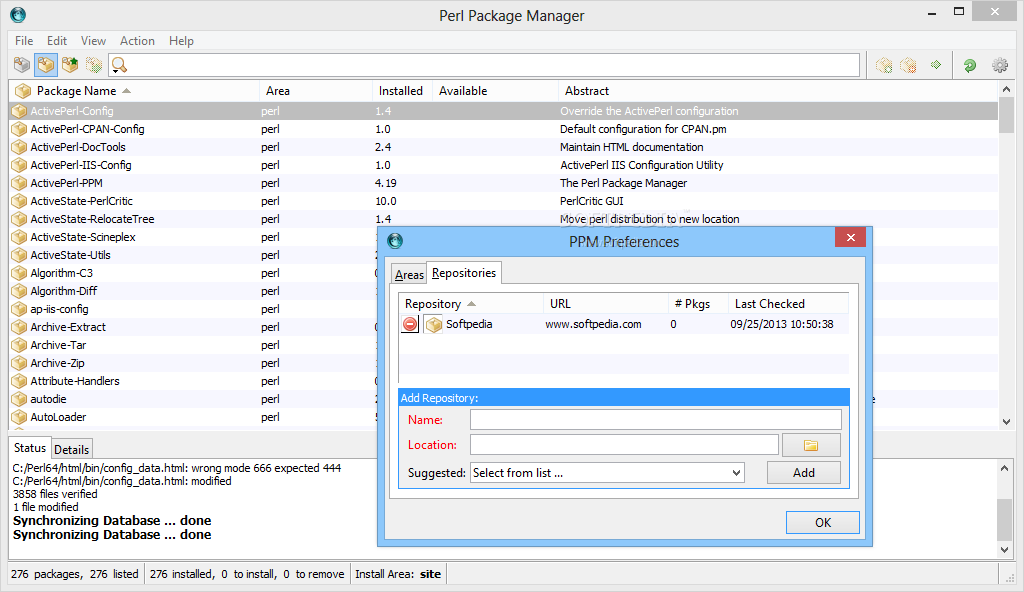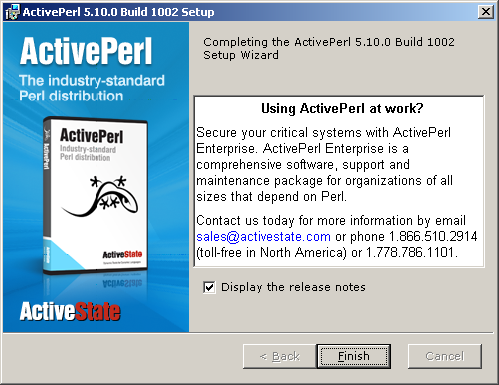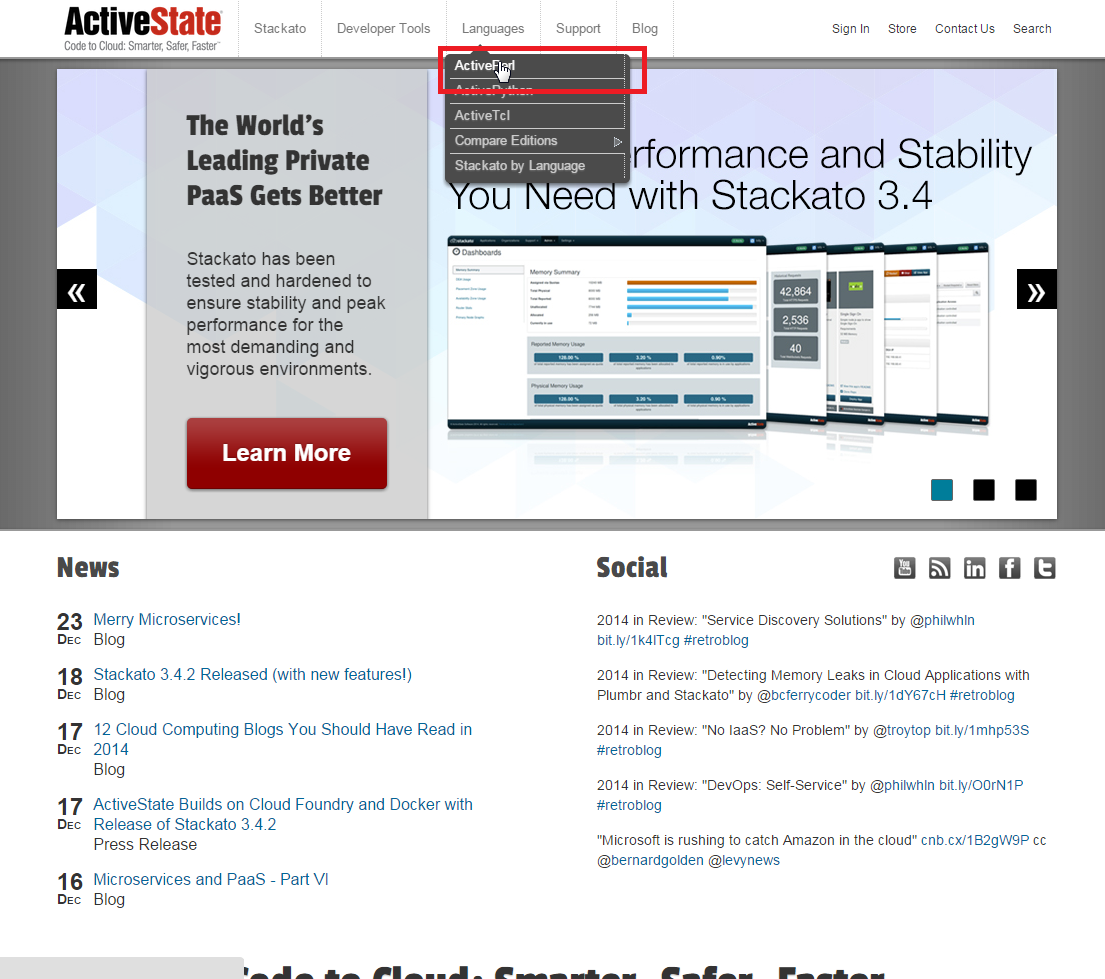

- #INSTALL ACTIVEPERL LINUX INSTALL#
- #INSTALL ACTIVEPERL LINUX CODE#
- #INSTALL ACTIVEPERL LINUX DOWNLOAD#
#INSTALL ACTIVEPERL LINUX INSTALL#
With ActiveState, you can install Perl and the State Tool directly on the command line, or you can use our Windows executable or MSI installer for ActivePerl 5.28.
#INSTALL ACTIVEPERL LINUX CODE#
Unlike other Perl distributions such as Strawberry Perl or perlbrew, our universal package manager, the State Tool, replaces CPAN and PPM and allows you to build runtimes with CPAN modules from source code (including linked C libraries), reducing your exposure to vulnerabilities and eliminate the need for a local compiler/build environment. Hardware: 55 MB hard disk space for typical install Operating System: Minimum 2.

Hardware: 250 MB hard disk space for typical install Operating System: Linux distribution using glibc 2.15 or later (e.g. We specialize in stable, secure, and easy-to-deploy Perl environments. Installing ActivePerl on Linux (x86) Linux Prerequisites. Installing ActivePerl for Linux Prerequisites. We offer the latest versions of a number of open source programming languages, including Perl, Python, and Tcl. Installing Perl requires unzipping and untarring the code that is contained in the ActivePerl distribution file and then running the installation script (sh.

To install: rpm -i ActivePerl-5.6.1.630-i686-linux.rpm ActiveState Package. This package installs perl in: /usr/local/ActivePerl-5.6 To install in a different location, use the '-prefix' option with the rpm command. Use the SetEnv.cmd script to set the PATH, LIB, and INCLUDE environment variables to the correct value for building ActivePerl extensions with this command: 'C:\Program Files\Microsoft Platform SDK\SetEnv.Cmd' /XP64 /RETAIL SUMMARY The easiest way to install additional modules into ActivePerl is by using PPM, the Perl Package Manager. Close the command prompt or terminal session.
#INSTALL ACTIVEPERL LINUX DOWNLOAD#
When you press the Enter key, Perl calls you by your name (in the example, it is Mark) and give you a dire warning.Ĭongratulations! You have installed Perl and written your first refers to ActiveState as “the simplest way to install the latest version of Perl.” We have been programmers’ trusted provider of Windows, Linux, and macOS Perl distributions for more than 20 years. To install: dpkg -i ActivePerl-5.6.1.b RPM Package. Download and Install Perl If Perl is not already installed, download the installer and install it yourself. If you typed everything exactly as shown, you are prompted to enter your name. you can use the cd command to move to the specified directory. In fact, you don't have to provide an extension at all, but it's good practice and helps you locate your Perl scripts easily later on.īack at the command prompt, change to the directory where you saved the Perl script. Save the file as to a location of your choice. Under the subheading Binary Distributions, go to Perl for Win32, and then click. Word processors store text along with special formatting codes that can confuse programming languages.Ĭreate a new text file and type the following exactly as shown: You can also get to ActivePerl via the Downloads button from the Perl web site. I think the better way is to install Linux (Open Suse or Kubuntu) and forget pain with modules installation. Just make sure you're not using a word processor like Microsoft Word or OpenOffice Writer. Typically installed by default with your operating system, A commercially distributed Perl such as ActiveState ActivePerl, or You can create a custom. Notepad, TextEdit, Vi, Emacs, Textmate, Ultra Edit and many other text editors can handle the job. Download, compile and install Perl You can download the source code of Perl from CPAN and then follow the instructions on that page: wget tar -xzf perl-5.16.2.tar.gz cd perl-5.16.2. To install Active Perl: go to this link: and download the installation file, installation steps are self explanatory. Download the distribution to a temporary directory, extract the files, switch to the extracted ActivePerl directory and then run the install.sh installation. The installation script will prompt you for the target installation directory. All you need to write Perl programs is a text editor. To install your own on Linux, you can go the ActiveState route as above, or also use the Homebrew package manager. Generic ActivePerl Installer for Linux (x86) and Solaris (sparc) Download the distribution to a temporary directory, extract the files, chdir to the ActivePerl directory and then run the script install.sh.


 0 kommentar(er)
0 kommentar(er)
